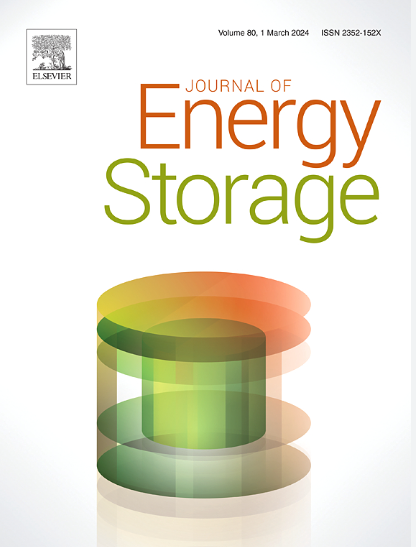Performance analysis and structural optimization of shell and tube phase change thermal storage devices based on industrial flue gas waste heat recovery
IF 8.9
2区 工程技术
Q1 ENERGY & FUELS
引用次数: 0
Abstract
Efficient recovery of high-temperature flue gas waste heat is critical for industrial energy sustainability, yet remains challenging due to the poor thermal conductivity of phase change materials (PCMs) in conventional thermal storage systems. This study introduces a novel shell-and-tube phase change thermal storage device, with a focus on analyzing the effects of different eccentric distances and flue gas pipeline spiral fin configurations on the thermal performance of the thermal storage device. The performance of the smooth pipe, the channel pipe, and the finned pipe in recovering waste heat from high-temperature flue gas is compared and their thermal storage capacities are explored. Additionally, a performance indicator called STESR is introduced to assess the impact of various design parameters on the thermal storage capacities of the thermal storage devices. Research results indicate that increasing the eccentric distance of the flue gas pipeline can significantly speed up the melting and solidification processes of phase change materials. Optimizing the design of flue gas pipeline fins can further enhance the melting process of PCM. However, excessively increasing the number or height of fins can lead to performance improvement bottlenecks. The channel pipe is more effective than smooth pipe in accelerating the melting process and is easier to work with, making them better suited for practical engineering applications. The STESR value offers an intuitive and effective means of evaluating performance. Case 6 shows the best performance in terms of STESR value, achieving a 65.2 % increase compared to the smooth pipe. Ultimately, case 1 emerges as the optimal design solution, with a 66.8 % increase in melting time and a 47.2 % increase in STESR value compared to the smooth pipe. This makes it well-suited for efficient thermal energy storage and flue gas waste heat recovery applications. This study provides a theoretical basis and reference for optimizing the design and practical application of phase change thermal storage devices.
基于工业烟气余热回收的管壳式相变蓄热装置性能分析及结构优化
高效回收高温烟气余热对工业能源的可持续性至关重要,但由于传统储热系统中相变材料(PCMs)的导热性差,仍然具有挑战性。本文介绍了一种新型的壳管式相变蓄热装置,重点分析了不同偏心距离和烟气管道螺旋翅片构型对蓄热装置热性能的影响。比较了光滑管、通道管和翅片管回收高温烟气余热的性能,探讨了它们的蓄热能力。此外,还引入了一种称为STESR的性能指标来评估各种设计参数对储热装置储热能力的影响。研究结果表明,增大烟气管道偏心距离可以显著加快相变材料的熔化和凝固过程。对烟气管道翅片的优化设计可以进一步提高PCM的熔化过程。但是,过度增加翅片的数量或高度可能会导致性能改进瓶颈。沟槽管比光滑管在加速熔化过程中更有效,并且更容易处理,使其更适合实际工程应用。STESR值提供了一种直观有效的评价性能的方法。案例6在STESR值方面表现最佳,与光滑管道相比,提高了65.2%。最终,情况1成为最优设计方案,与光滑管道相比,熔化时间增加了66.8%,STESR值增加了47.2%。这使得它非常适合于高效的热能储存和烟气余热回收应用。本研究为相变蓄热器件的优化设计和实际应用提供了理论依据和参考。
本文章由计算机程序翻译,如有差异,请以英文原文为准。
求助全文
约1分钟内获得全文
求助全文
来源期刊

Journal of energy storage
Energy-Renewable Energy, Sustainability and the Environment
CiteScore
11.80
自引率
24.50%
发文量
2262
审稿时长
69 days
期刊介绍:
Journal of energy storage focusses on all aspects of energy storage, in particular systems integration, electric grid integration, modelling and analysis, novel energy storage technologies, sizing and management strategies, business models for operation of storage systems and energy storage developments worldwide.
 求助内容:
求助内容: 应助结果提醒方式:
应助结果提醒方式:


